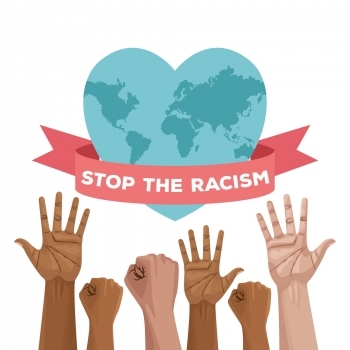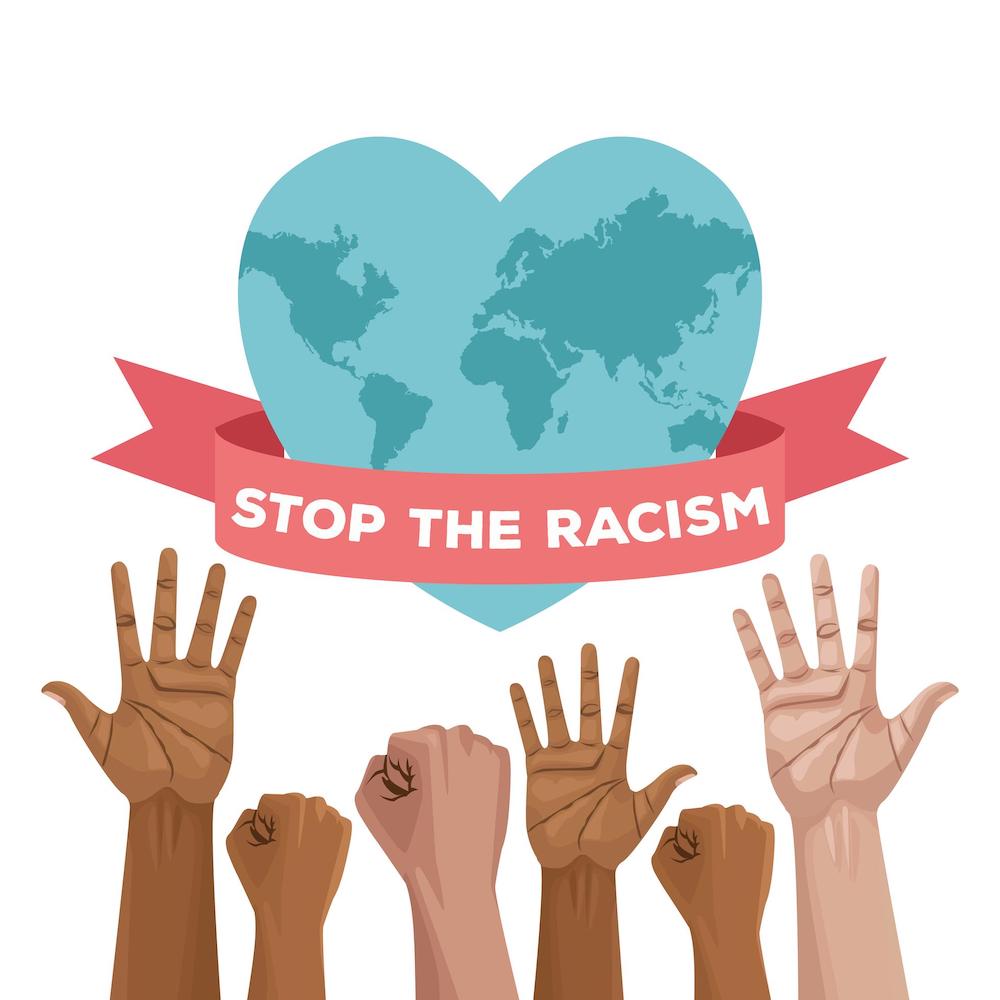
.jpg) Mathew John
Mathew John

Growing up in the time of the Civil Rights movement that was roiling distant America, my generation of Indians or, let’s admit, the less informed ones like me, believed that racism was a rubric to describe the fraught relationship between the white man as oppressor and the black man as the victim. This unenlightened view was as much a function of our ignorance of the larger ramifications of racism as of our own subconscious refusal to “look the beast in the eye”, that is, our reluctance to admit the terrible racism in our own backyard.
The Oxford Education Dictionary definition of racism is as it should be in a dictionary – an encapsulation that embodies the nucleus but not the entire connotation. I would reformulate racism as a social malady bristling with discrimination, prejudice and antagonism to likely concomitant feelings of superiority evinced by an individual, community or institution against a person or people on the basis of differing features such as race, ethnicity, religion or the colour of the skin even within the same ethnic group, the last-named being of particular relevance to our country.
What we have in our midst is a many-headed monster that is as abominable here as anywhere else in the world but what makes our situation even more troubling is our disingenuous and socially feeble resistance to such inhumanity. So integral is racism to our society that we have become almost blasé about what’s ubiquitous and endemic. As a society, are we self-delusional because the reality is unbearable or are we out and out racists? Here’s my take.
In terms of personal hurt and humiliation, racism cuts to the bone, leaving a lasting scar on the victim. The young, by far, are most deeply affected by racism, and yet so little has been done to systemically address this deeply embedded malaise that does not spare our most vulnerable. What needs to be underlined is that even among children, there is the victim and the oppressor and, believe me, there are none so cruel as cruel children! I speak from personal experience.
To understand my brush with racism, I need to mention that I am a Malayali Christian with a dark complexion which would become even darker during the kite-flying season. I did my schooling in Rajasthan. When I was barely eleven years, four of my classmates, rank bullies, began calling me Kalia (blackie) which became my nickname. It stung badly and all of a sudden, I felt a pariah. It crossed my mind then of how unfair it was that the shame and odium were entirely attached to the victim, whereas the perpetrators of such verbal violence were not even conscience-stricken. I was absolutely alone in my misery, left to fend for myself. I hated school and often feigned illness to avoid my tormenters. As there was no ‘Fair and Lovely’ cream in those days, I applied talcum powder on my face in a pathetic attempt to look lighter-skinned and ended up with a charcoal-grey complexion. Was I glad when my father relocated to a different city!
In those traumatic years of my youth, there was also the more general racist stereotyping of my Christian pedigree. For most of my peers, all Christians were painted with an undifferentiated brush and were, ala the screen version of Helen the vamp and Antony the drunk, real-life purveyors of loose and fast living. When watching films, Helen’s hip-gyrations always filled me with self-conscious embarrassment and unlike my deliriously excited compatriots, I was relieved when the scene ended; don’t ask me why.
By far, the most oppressed and helpless victim of our sordid colour-consciousness which determines a person’s worth on the basis of skin colour, is the girl who is dark-complexioned. This is especially so, given our crude, uneducated notion of a fair skin as an essential ingredient of physical beauty, particularly in women.
And there’s no place to hide from such sadism. At home, the poor girl’s face is plastered with turmeric, curd and sundry other concoctions as family members, with the best of intentions, reinforce her sense of inferiority. Outside, the billboards advertise creams to lighten skin, screaming the arrant nonsense that only fair is beautiful. TV and Cinema shore up this perverse and gross distortion of human comeliness. If you think this is hyperbole, look at our matrimonial ads across communities -- the most shameless public exhibition of our casteist, religious and colour bigotry and, for good measure, our sexist paranoia about the manglik.
Significantly, the bigotry against people of dark complexion is not a legacy handed down as historical baggage from the distant past. Millenniums before “Black is beautiful” became the assertion of black beauty, our country celebrated blackness as desirable. Our legendary heroes, the most powerful gods and goddesses were dusky, actually ebony in colour. Lord Krishna, considered to be an incarnation of Lord Vishnu, had a very dark skin tone, so did Lord Ram. Kali – the goddess with destructive power over evil -- as her name suggests, quite black. And Draupadi, the indomitable protagonist in the Mahabharata is described as an extremely beautiful black woman.
Regrettably, somewhere along the way we have forsaken this invaluable heritage of being blind to colour in the best, most godly way. There is little doubt that the white man’s “superior’ whitey psychosis and his daunting presence on our soil for over two centuries not only damaged us economically but debased our sensibilities with their racist ways. Despite the ingrained English sense of superiority and the withering disdain of the Churchills and Kiplings for Indians, the subjugated were brainwashed into thinking that white skin not only represented power but superior intelligence, desirability and beauty too. Sadly, though the British have long been gone, we have not been able to shake off this revolting belief in the illusory superiority of the light skin over the dark. I propose to flesh this out with an example, even at the risk of making you want to throw up.
In 2017, in the wake of a series of attacks on Africans, Tarun Vijay, a former BJP Member of Parliament, defended India against charges of racism with this cynical and racist howler: “If we were racist, why would the entire South India which is …. you know Tamil, Kerala, Karnataka and Andhra…. why do we live with them? We have blacks, black people around us!” Apart from the stupid analogy, one cannot miss the even more absurd condescension of the” fair” North Indian agreeing to “live with” the “darky” South Indian. As racists, we are as bad as they come!
The awful and deep-seated racism faced by the dark-complexioned in India has its funny side too. My younger brother, who is a shade darker than I am, was reminded of the colour of his epidermis a few years ago when, sufficiently hardened, he could laugh at the sheer absurdity of our colour fixation. This happened in the 1990s when he and a friend, Karmavir, ran a business dealing in office equipment. Their joint venture was named “Black and Decker” after its main supplier. One fine morning, a customer, who was a regular visitor to their office, rang up and enquired: “Is that Black and Decker”? Karmavir politely replied, “Yes”! The customer who apparently did not know my brother’s name, then asked: “Is that Mr Black?” Karmavir’s reflexive and honest response is one for the ages: “He’s gone out but can I help you?”
As a society, we are a brimming toilet bowl of squalid prejudices. Our cruel and condescending attitude toward people of African origin is as disgustingly racist as anywhere else in the world, and we cannot exculpate our societal inhumanity with the fig leaf that it is not institutionalised discrimination. A Barbadian friend has hair-raising tales to tell about the everyday racial discrimination he has faced -- being hounded by groups of taunting youngsters, being sniggered at, the words “habshi” and “bandar” relentlessly following him everywhere.
Toni Morrison, the great American writer, has pointed to the simple truth that “there is no such thing as race, none. There is only the human race – scientifically, anthropologically.” We are best-placed to understand what she means. In so many ways, our society represents the rich diversity of the human race with its variety of physical characteristics in facial features, hair texture and skin colours that range from white to jet black.
And yet we oppress our own! Consider the terrible discrimination faced by the people of the North-Eastern States who are routinely denigrated with the moniker of “chinky” because of their mongoloid features. It is with a deep sense of shame that one recalls their mass exodus out of Bangalore in 2012 and the severe harassment they faced during the pandemic, the most hideously reprehensible being the case of the brute who spat on the face of a Manipuri woman and called her “Corona”.
The despicable and widespread phenomenon of discrimination against people of dark skin is known as colourism in America, which is essentially racism by another name. The term defines the feelings of superiority and corresponding inferiority based on skin tone. In our society, the problem of racism or colourism is further exacerbated by the fault lines around caste and religion.
In a social milieu riddled with all forms of discrimination against vulnerable groups, the oldest and the most enduring is the relentless caste oppression in our midst. A few days back, we shrugged off the incident of a Dalit boy being assaulted and forced to lick the feet of one of his upper caste tormentors. Our collective indifference stems from the fact that such brutality is so tediously commonplace. Even the official statistics which, given the Dalit’s fear of law enforcers, touches only the tip of the problem, indicate that crimes against Dalits are not just endemic but increasing every year. In the three years between 2018 and 2020, as many as 1,39,045 crimes against Dalits were registered with the police, out of which 53,886 cases were recorded in 2020 – the highest ever.
There is still a large proportion of our population which believes that castes are exclusive, immutable, hereditary and endogamous, with a hierarchy of status and privilege that is blatantly racist. It is therefore no surprise that as far back as 2004, the UN special rapporteur on contemporary forms of racism and racial discrimination had included the caste system in the list of “political platforms which promote or incite racial discrimination,” an indictment repeated by the UN’s special rapporteur on minority issues in 2016. But then who listens to the criticism of the toothless UN or for that matter who, but for the activist jholawalas, cares for human rights?
Should there be mention of the religion-based discrimination against Muslims, the racism of hate that has been showcased by the State via the Citizenship Amendment Act (CAA) 2019? We are all witness to the unending persecution of Muslims and so I shall not belabour the point but it is important to know that this poison has also affected the young. Not too long ago, the six-year-old granddaughter of a Muslim friend returned home from school in tears because her friends told her: “Mussalman se bahuth dar lagta hai! (Muslims scare us). I shudder to think of what life will be like when these guys grow up!
Let’s admit it – racism is everywhere and its universality renders it normal. That makes all of us complicit in a cover-up of evil. At this time of unending heartbreak, I can only hope that we take to heart what Angela Davis urged: “In a racist society, it is not enough to be non-racist. We must be anti-racist.”
(The writer is a former civil servant. Views are personal)